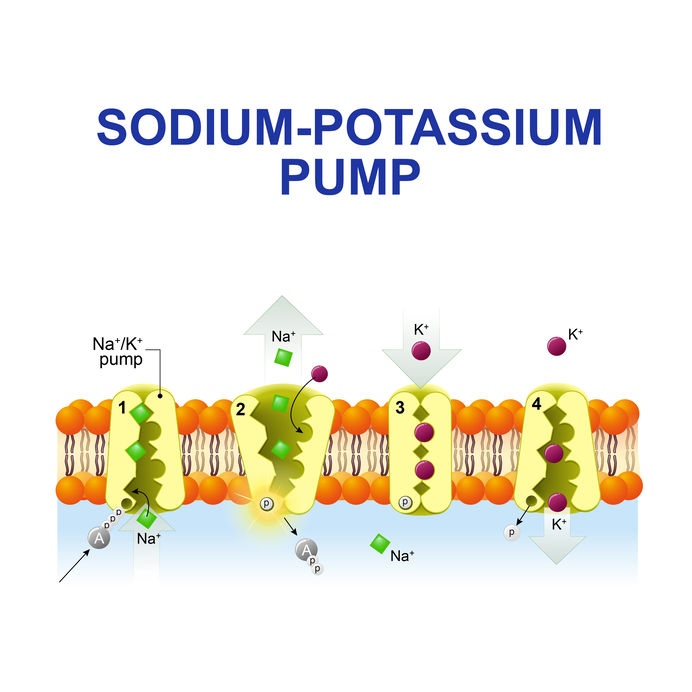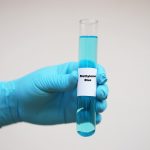
The summer season brings with it heat and humidity, and when humidity levels exceed 70%, that excess moisture can interfere with the body’s ability to sweat and cool itself as it attempts to maintain homeostasis. This can spell trouble for some clients who like to exercise outdoors, or perhaps, work out in a facility without A/C.
Personal trainers armed with a deeper knowledge of the physiology of bodily heat regulation and the sodium-potassium balance can successfully prevent serious health issues from arising. Although anyone can be impacted by heat and humidity, individuals over the age of 50, those who are overweight, or those who have comorbid heart, lung, or kidney issues run a higher than normal health risk.
If you work with clients who fit this description, knowing when and how to address this concern can mean the difference between a good workout and an exhausting wasted effort.

When Heat is High, Blood Pressure is Higher
Blood pressure specifically may be affected in summer weather because of the body’s attempts to radiate and disperse heat. High temperatures coupled with high humidity cause more blood flow to the skin, placing heavy demands on the heart to exert extra effort.
Heat and sweating can also lower the amount of fluid in the body, thereby decreasing blood volume and increasing risk of dehydration, placing even more strain on the heart. In some cases, the body may circulate twice as much blood per minute compared to a cool day.
Sodium-Potassium Pump: Striking the Perfect Balance
The human body’s cardiovascular system relies on a delicate yet critical sodium-potassium balance in order to pump optimally. A number of studies have shown an association between low potassium intake and increased blood pressure compounded by a higher risk of stroke. Individuals already living with and managing high blood pressure can significantly lower their systolic blood pressure reading by increasing potassium intake through healthy whole-food choices.
Recent research found that in the absence of hypertension issues, women who consumed the most potassium (nearly 3,200 milligrams per day) had a 21% reduced risk of stroke. Those whose diets were rich in potassium were also 12% less likely to die during the time frame of the study than those did not focus on this element in daily meal plans.

How Potassium Protects Us
Foods that are rich in potassium are important in managing high blood pressure in addition to overall health. The more potassium one consumes, the more sodium will be lost through urine output. Most of the body’s supply of potassium resides inside the cells as opposed to sodium, which resides outside the cells. To that end, potassium eases tension within blood vessel walls, further helping to lower blood pressure and guard against muscle cramping.
In addition to helping to maintain a proper fluid balance in your body, potassium also fosters the following functions:
- Ensures proper clotting
- Protects the stomach lining from acidic damage
- Maintains healthy blood pressure
- Promotes heart and bone health
- Maintains the body’s pH balance
- Carries nutrients to the cells
All Sodium is Not Created Equally
Salt in one’s diet provides two key elements – sodium and chloride –which are essential for life. The human body cannot make these elements on its own, so the proper amounts of each must be obtained through one’s diet. However, not all salts have the same effect on the body’s various systems.
It is important to keep in mind that, aside from the basic differences in nutritional content, it is the processing that renders table salt detrimental to our health. Table salt is mined salt from the earth and the processing is intended to remove the minerals, some of which may be unfit for consumption. But it also removes the minerals we need. The human body operates optimally by consuming natural, unprocessed salt, without the addition of potentially harmful chemicals, anti-clumping agents.
Consider the following data:
- Natural unprocessed salt, such as sea salt and Himalayan salt, contains about 84% sodium chloride; about 37% of this is pure sodium. The remainder consists of naturally-occurring trace minerals, including silicon, phosphorus, and vanadium. (table salt contains about the same percentage of sodium)
- Himalayan salt boasts a higher potassium content in comparison to other salts, including naturally occurring sea Celtic salts. Himalayan salt contains 0.28% potassium, compared to 0.16% found in Celtic salt, and 0.09% in regular table salt.
Adding Potassium is Easier Than Reducing Sodium
The balance between sodium and potassium may be a deciding factor in whether an individual’s salt consumption will ultimately be harmful or helpful. The authors of one research study proposed an interesting approach: rather than recommending aggressive sodium reduction across the board, they raised the possibility of consuming a high-quality diet rich in potassium.
This, they surmised, might achieve greater public health benefits, most notably blood-pressure reduction. As observed by one scientist, Dr. Martin O’Donnell of McMaster University, “… it is easier for people to add things to their diet than to take away something like salt.”
Potassium, Athletes, and Food Sources
Today’s American diet suggests that most individuals barely consume half of the recommended Adequate Intake (AI) of potassium — 4,700 milligrams (mg) a day. Because potassium is lost through sweat and urine, athletic and very active clients might need reminding to consume potassium-rich foods each day.
Low potassium levels can reduce energy and endurance, given its role in the storage of carbohydrates to fuel muscles. The frequency and degree to which muscles contract depend heavily on an appropriate potassium/sodium balance in the body.
Beyond the highly touted banana, many melons and citrus fruits, dark green leafy vegetables, lima and kidney beans, sweet potatoes, nuts and fish are delicious, dense sources of potassium that incorporate easily into a variety of recipes.
At-Risk Populations
The data from a 2011 federal study into sodium/potassium intake, published in the Archives of Internal Medicine, was one of the first and largest studies undertaken in our country to evaluate the relationship of salt, potassium, and heart disease deaths.
As the scientists expected, participants who consumed an abundance of salt and very little potassium were more than twice as likely to die from a heart attack as those whose diets contained equal amounts of both nutrients. Evidence continues to point towards the correct potassium to sodium balance exerting a greater influence on one’s risk for high blood pressure and heart disease than high sodium intake alone.
While we have been extolling the benefits of healthy potassium consumption, such a practice can be harmful to individuals with kidney disease or any comorbid condition that affects how the body handles potassium.
In patients with chronic kidney disease (CKD), the higher the ratio of urine sodium and potassium over a 24-hour period, the faster the deterioration of renal function. Research has elucidated how low sodium intake coupled with a dedicated consumption of foods higher in potassium could delay the deterioration of renal function. In addition, certain prescription medications can render the processing of potassium problematic.
Acknowledging the legal scope of practice to which personal trainers adhere, we may point these issues out to clients; however, such matters are best left to the judgment of a client’s physician or registered dietitian.
References:
https://europepmc.org/abstract/med/25619794
https://articles.mercola.com/sites/articles/archive/2014/08/25/sodium-potassium-ratio.aspx
https://articles.mercola.com/sites/articles/archive/2017/05/29/salt-health-effects.aspx
http://blog.insidetracker.com/hydration-sodium-potassium-and-exercise-what-you
https://www.heart.org/en/health-topics/high-blood-pressure/changes-you-can-make-to-manage-high-blood-pressure/how-potassium-can-help-control-high-blood-pressure
https://www.ncbi.nlm.nih.gov/pmc/articles/PMC5733743/
https://www.heritageseniorcommunities.com/2018/06/15/the-dangers-of-summer-humidity-for-adults-with-high-blood-pressure/
https://www.kidneybuzz.com/heat-is-the-number-one-weather-related-killer-among-ckd-and-dialysis-patients
https://www.ahajournals.org/doi/full/10.1161/01.HYP.0000164629.94634.27
https://medium.com/@drjasonfung/the-salt-scam-1973d73dccd
https://www.ncbi.nlm.nih.gov/pmc/articles/PMC6221621/
http://www.health.harvard.edu/heart-health/potassium-lowers-blood-pressure






